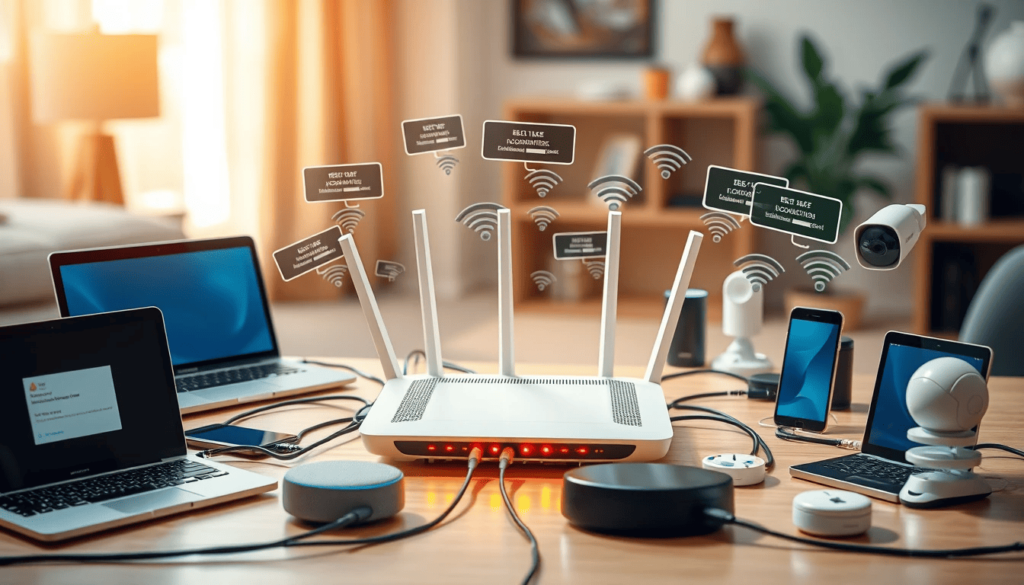Connection issues with multiple devices on 192.168.0.1 and 192.168.1.1

Connection issues with multiple devices on 192.168.0.1 and 192.168.1.1 can be frustrating, especially in a multi-floor office setting. Understanding how these IP addresses function is crucial for troubleshooting and ensuring seamless network connectivity.
This article explores common problems, diagnostic methods, and effective solutions to optimize network performance across different subnets.
- How to diagnose connection issues between 192.168.0.1 and 192.168.1.1?
- What are common problems when switching from 192.168.1.1 to 192.168.0.1?
- How can you solve AX88u connection issues when devices are assigned IP 192.168.0.x?
- What to do if multiple devices have the same IP address?
- How to bridge networks on different subnets effectively?
- What are the best practices for managing IP addresses in a dual-floor office network?
How to diagnose connection issues between 192.168.0.1 and 192.168.1.1?
Diagnosing connection issues between 192.168.0.1 and 192.168.1.1 requires a systematic approach. Start by checking the physical connections and ensuring all devices are powered on and properly connected.
Next, verify the network settings on each device. Check if the devices are within the correct IP range and that their subnet masks are correctly configured. For example, devices on 192.168.1.x should have a subnet mask of 255.255.255.0.
Additionally, use the command prompt to ping both IP addresses. This will help identify if the devices can communicate with each other. If pings fail, check for firewall settings that might be blocking traffic between subnets.
What are common problems when switching from 192.168.1.1 to 192.168.0.1?
Common problems when switching from 192.168.1.1 to 192.168.0.1 often involve IP address conflicts. Devices may have been assigned static IPs within the same range, leading to duplicate addresses.
Another frequent issue is related to subnet configurations. If devices are not set to the correct subnet mask, they might not communicate effectively, causing connectivity issues.
Various devices, such as printers and computers, might also struggle to access resources if they remain on separate subnets without proper bridging configurations.
- Check for conflicting static IP addresses.
- Ensure subnet masks match the network configuration.
- Verify that routers and switches are configured correctly for the new IP range.
How can you solve AX88u connection issues when devices are assigned IP 192.168.0.x?
To solve AX88u connection issues with devices assigned IPs in the 192.168.0.x range, start by updating the router's firmware. This can resolve bugs that affect connectivity.
Check the DHCP settings to ensure that the router is correctly assigning IP addresses within the desired range. For optimal performance, consider reserving IPs for critical devices like printers.
Network segmentation can also help. If devices are on different subnets, implementing a bridging solution might be necessary to allow communications between them.
What to do if multiple devices have the same IP address?
When multiple devices share the same IP address, it creates a network conflict, leading to connectivity issues. The first step is to identify the devices involved in the conflict.
Access the router's admin panel and review the DHCP client list to locate devices with duplicate IPs. Once identified, reassign IP addresses to ensure uniqueness.
Implementing static IP assignments for essential devices can prevent future conflicts. This is particularly useful in environments where devices frequently connect and disconnect from the network.
- Identify and list the conflicting devices.
- Reconfigure IP settings to ensure all addresses are unique.
- Consider using static IPs for devices that need consistent access.
How to bridge networks on different subnets effectively?
Bridging networks on different subnets can be challenging yet necessary for effective resource sharing. To bridge effectively, first, ensure that the bridging device, such as a bridging computer or router, is configured correctly.
Monitor the traffic to ensure that packets can flow between the subnets without issues. Adjust configurations as needed to facilitate proper communication.
It's also essential to keep in mind network layer differences. Understanding how layers interact can help diagnose and solve bridging issues effectively.
- Ensure the bridging device supports the required protocols.
- Check the routing configurations to allow traffic flow between subnets.
- Regularly update the firmware of networking devices to enhance performance.
What are the best practices for managing IP addresses in a dual-floor office network?
Managing IP addresses in a dual-floor office network requires careful planning. First, maintain distinct IP ranges for each floor, such as 192.168.1.x for Floor 1 and 192.168.0.x for Floor 2.
Implement a clear DHCP configuration to avoid conflicts and ensure devices receive appropriate IP addresses automatically. Keeping records of assigned IP addresses can also facilitate management.
Additionally, consider using static IP address configuration for critical devices such as printers and servers. This approach minimizes disruptions and simplifies troubleshooting.
- Document the IP address assignments for easy reference.
- Educate staff on the importance of maintaining assigned addresses.
- Regularly review and update the network configuration as needed.

Deja una respuesta